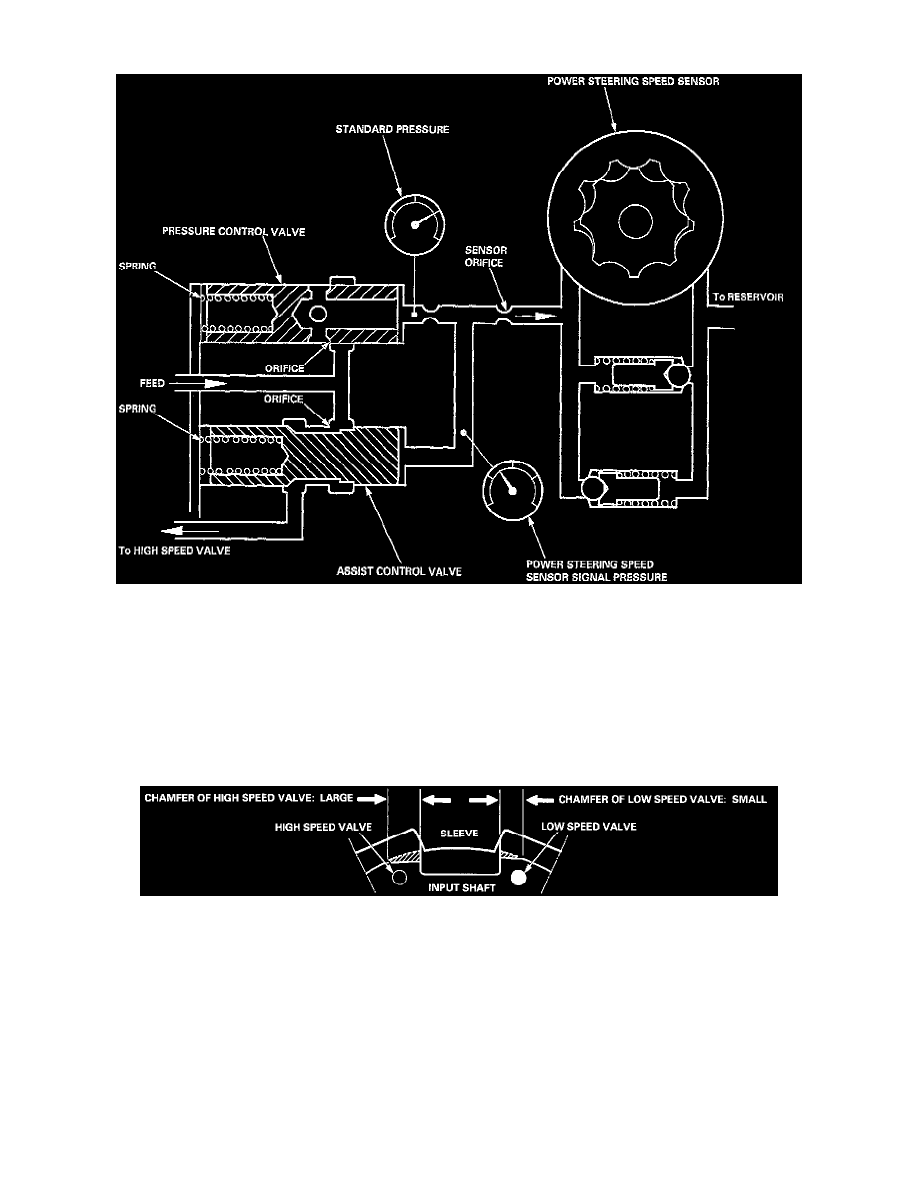TL L5-2451cc 2.5L SOHC MFI (1997)

Power Steering Pressure Control Valve: Description and Operation
ASSIST CONTROL VALVE
The assist control valve unit consists of the assist control valve, which is controlled by the power steering speed sensor, and the pressure control valve.
The pressure control valve and the assist control valve, located between the pump and the speed sensor, control the fluid passage to the rotary valve.
The fluid pressure from the pump is reduced to a "standard pressure" by the pressure control valve, and this standard pressure is fed to the assist
control valve. The standard pressure is drawn out by the rotation of the speed sensor, producing a pressure gap between the pressure control valve and
the assist control valve when the standard pressure fluid passes the sensor orifice. This pressure gap, which changes with the fluid volume drawn (that
is, it changes with vehicle speed), is referred to as the power steering speed sensor signal pressure. The assist control valve operates according to this
speed sensor signal pressure to change the fluid passage to the high speed rotary valve.
VALVE BODY UNIT
The rotary valve body unit has two valves, a low speed valve and a high speed valve, which can be identified by the chamfer width.
The opening area (the gap between the input shaft and the sleeve) of the two valves changes with the displacement angle (angle gap between the input
shaft and the sleeve) produced during steering. In other words, the valve opening area changes according to the intensity of the road reaction (steering
torque).
